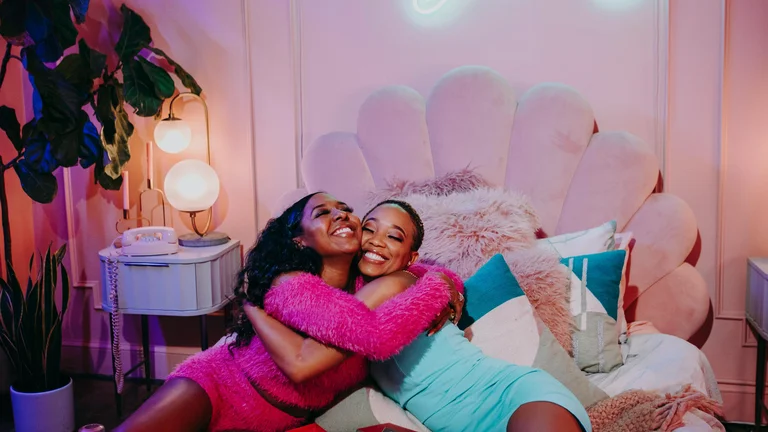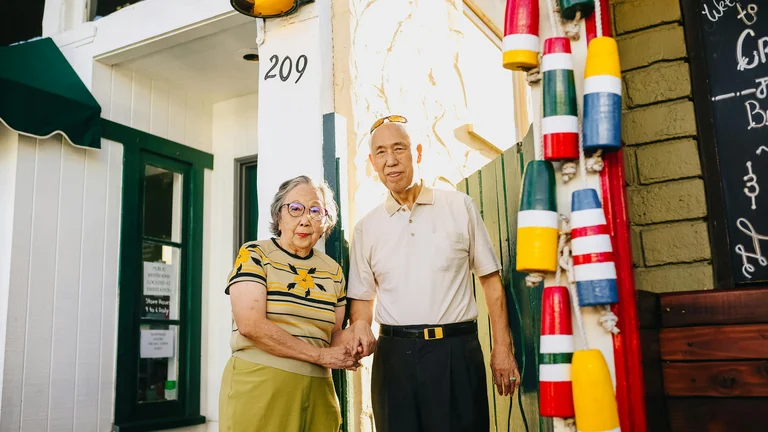
Korean dramas (K-Dramas) often captivate fans worldwide with their evocative storylines, charismatic characters, and emotionally charged moments. Among these elements, sleepover scenes hold a special place, blending charm, warmth, and intimacy. These adorable sleepover moments go beyond simple plot devices; they create memorable interactions, deepen character relationships, and showcase cultural nuances in Korean friendship and familial dynamics. Sleepovers in K-Dramas frequently act as catalysts for vulnerability, humor, bonding, and tender expressions of affection, making them a beloved trope among viewers.
These scenes are crafted with meticulous attention, often highlighting amusing sleepover rituals such as sharing snacks, applying facial masks, giggling over secrets, engaging in pillow fights, or confessing internal emotions under dim lighting. Each sequence exemplifies the delicate balance between youthful innocence and emotional depth, providing insights into characters’ personalities and growth. The aesthetic portrayal of sleepovers often aligns with the cozy, pastel-hued decor and soft fabrics, enhancing the sensual storytelling without overt romanticization. The adorability factor arises from the nuances of interaction — the playful teasing, supportive gestures, and moments of pure joy that feel authentic and relatable.
Understanding these moments requires exploring multiple series known for memorable sleepover episodes, breaking down recurring narrative themes, symbolic patterns, and the impact on audiences. We will also examine the cultural backdrop influencing such depictions and how these scenes contribute to character development and plot progression. This comprehensive analysis aims to enrich appreciation for this seemingly simple but complex trope.
Aesthetic and Atmosphere: Setting the Tone for Adorable Sleepovers
Sleepover scenes in K-Dramas are visual and emotional hubs that merge ambience with character intimacy. The atmosphere often relies heavily on subtle lighting, warm color palettes, and detailed set designs that evoke comfort and closeness. Pillows, blankets, fairy lights, plush toys, and cute snacks create an environment that immediately transports viewers into a safe, informal space. This careful orchestration invites the audience to sense the warmth and informality of the setting, often contrasting with the tension or formality of daytime scenes.
The details, from mismatched pajamas to scattered magazines or bowls of instant ramen, reinforce casual authenticity rather than staged perfection. The layout presents an area where characters shed societal roles and masks, allowing their vulnerability to surface. Sound design also enhances the feeling of coziness through background music with soft melodies, light-hearted laughter, and whispers.
One remarkable facet is the deliberate pacing of these moments. Directors slow down dialogues, implement natural pauses, and employ lingering close-ups that emphasize the emotional nuances in expressions. This technique encourages viewers to absorb subtle character interactions beyond scripted conversations.
Such immersive atmospheres facilitate storytelling anchored in interpersonal warmth. By inviting audiences into these intimate chambers, K-Dramas create emotional resonance and heighten the relatability of characters, who in turn feel more human.
Common Narrative Functions of Sleepover Scenes
Sleepover moments in K-Dramas fundamentally serve multiple narrative purposes. Beyond simple comic relief or filler material, they often act as turning points for character arcs, relationship development, and storytelling shifts. Below are prominent ways these scenes function:
- Character Vulnerability and Revelation: Sleepovers symbolize safety, where characters drop their façades. Emotional disclosures, fears, and insecurities surface, allowing depth and empathy to develop.
- Friendship and Bonding: These moments emphasize platonic love and support. Shared laughter, advice, and physical closeness reinforce trust and camaraderie.
- Romantic Progression: For romance-centered plots, sleepovers create intimate settings to foster soft, understated romantic tension without overt declarations.
- Comic Relief and Light-heartedness: Playful interactions during these scenes provide levity, balancing heavier drama in the storyline.
- Plot Advancement: Sleepovers can introduce new conflicts or secrets, leading to subsequent narrative development.
This list can be expanded further depending on the specific drama or episode, but these core functions showcase the versatility of sleepover scenes.
Iconic Adorable Sleepovers in Popular K-Dramas
Certain K-Dramas have set benchmarks for sleepover moments that fans frequently revisit. Detailed analyses of these scenes illuminate their construction and lasting appeal.
1. "Weightlifting Fairy Kim Bok-joo" (2016) - The Comforting Sleepover Experience
In this sports romance drama, the sleepover between Bok-joo and her friends encapsulates warmth and youthful innocence. The scene features the group engaging in candid conversations, sharing snacks like instant noodles and candy, and applying skin care products in a playful yet sincere manner. The environment reflects the close-knit bond among university athletes, portraying friendship in a realistic setting away from competitive pressure. The sleepover also signals a pause from personal anxieties, reinforcing emotional refuge.
2. "Reply 1988" (2015) - Authentic Nostalgia Meets Friendship
Reply 1988 has a notable sleepover scene among its ensemble cast that masterfully intertwines humor and layered interpersonal dynamics. The characters indulge in silly, childish antics, while also revealing hidden feelings and familial reflections. This particular sleepover highlights generational differences and confessional moments. Classic Korean snacks, retro decor, and casual attire immerse viewers in late 20th-century South Korea, amplifying authenticity.
3. "My ID is Gangnam Beauty" (2018) - Exploring Self-Acceptance Through Friendship
This drama’s sleepover moment between the female leads is pivotal in unveiling insecurities related to self-image and societal expectations. Unlike bubbly or carefree depictions, this scene embodies quiet supportiveness, with comforting dialogues focusing on identity struggles. The presence of shared beauty routines symbolizes empowerment and solidarity. The sleepover transcends a mere social gathering and becomes an emotional anchor.
Each example above shares core aesthetic and thematic elements yet adapts them to suit the drama’s unique premise, enhancing narrative depth.
Cultural Context Behind Sleepovers in Korean Media
Sleepovers in Korean dramas reflect broader sociocultural norms and historical shifts in South Korea. Traditionally, Korean culture has placed significant emphasis on formality, hierarchy, and family cohesiveness. Informal sleepover gatherings, especially among young women, have become popularized only relatively recently as younger generations adopted more liberal social behaviors.
The acceptable boundaries and typical scenarios for sleepovers in Korea often diverge from Western practices. For example, co-ed sleepovers are less common and can carry different social connotations. Female-only gatherings symbolize trust and sisterhood in an environment still influenced by conservative values.
Moreover, sleepovers in K-Dramas often depict homes as sanctuaries, emphasizing filial piety through scenes involving parental figures or culturally significant gestures like offering tea or snacks. This creates narrative tension when characters negotiate between individual desires and family expectations.
Understanding these societal underpinnings enriches the appreciation of sleepover scenes, revealing layers of meaning embedded in what might appear as simplistic cute moments. The portrayal often balances aspiration toward modern freedom with reverence for tradition.
Table: Comparison of Sleepover Elements in Key K-Dramas
| Drama Title | Atmosphere | Main Character Roles | Theme(s) Explored | Typical Activities |
|---|---|---|---|---|
| Weightlifting Fairy Kim Bok-joo | Warm and Casual | University Athletes | Friendship, Comfort | Snacks, Skin Care, Laughing |
| Reply 1988 | Retro, Nostalgic | Neighborhood Friends | Family, Growing Up | Playful Antics, Sharing Secrets |
| My ID is Gangnam Beauty | Supportive, Intimate | College Students | Self-Image, Acceptance | Beauty Routines, Heart-to-Hearts |
| Because This Is My First Life | Realistic, Comforting | Roommates | Adult Friendship, Vulnerability | Deep Conversations, Cooking |
| Extraordinary You | Fantasy, Whimsical | High School Classmates | Identity, Romance | Whispering, Dream Sharing |
Guidelines for Creating an Adorable Sleepover Scene in K-Drama Style
For writers, directors, or content creators aiming to emulate the charm of K-Drama sleepovers, several design principles and storytelling techniques are crucial:
- Environment Curation: Craft a realistic yet cozy setting using soft lighting, tactile fabrics, and inviting space planning. Include items like plush cushions, small snacks, and personal trinkets.
- Character Interaction: Focus on natural, spontaneous dialogues that balance humor and sincerity. Encourage moments of silence that allow expressions to convey underlying emotions.
- Emotional Layering: Use sleepovers as safe spaces for conflict resolution, emotional breakthroughs, or revealing hidden facets of character personalities.
- Cultural Detail: Incorporate culturally relevant elements such as Korean snacks (tteokbokki, ramyeon), traditional hairstyles, and social etiquette during group settings.
- Music and Sound: Include background tracks that are mellow and non-intrusive, emphasizing warmth and relatability rather than drama escalation.
Applying these techniques systematically can result in sleepover scenes that feel integral and authentic rather than mere filler content.
Psychological Impact of Sleepover Moments on Viewers
Audiences often find sleepover scenes in K-Dramas emotionally resonant due to their portrayal of trust, vulnerability, and intimacy. Psychologically, these moments activate empathetic responses, making viewers relate to characters’ experiences and long for similar real-life connections.
Sleepovers often represent safe havens where people feel unguarded. This dynamic triggers feelings of nostalgia, reminding viewers of their own childhood or formative social experiences. This effect is intensified when scenes show characters supporting one another through personal struggles or celebrating small joys.
From a social psychology perspective, such representation affirms the universal human desire for belonging and acceptance. The subtle cues in body language, tone, and environment simulate real-world closeness, reducing perceived emotional distance between character and viewer.
Furthermore, sleepover scenes sometimes model positive conflict management and active listening skills. By watching characters navigate disagreements or reveal self-doubts productively, viewers may absorb these behaviors subconsciously, contributing to emotional intelligence growth.
List: Key Characteristics Making Sleepover Scenes Adorable
Applications of Adorable Sleepover Scenes Beyond Entertainment
Sleepover moments, as portrayed in K-Dramas, transcend simple narrative devices and can influence real-world social behaviors and media applications:
1. Social Modeling: These scenes provide viewers, especially younger audiences, with positive models of friendship and emotional openness. They normalize expressing vulnerability and supporting peers emotionally.
2. Marketing and Merchandising: The aesthetic of K-Drama sleepovers has inspired related merchandise such as sleepwear lines, skincare kits, and themed snacks, emphasizing comfort and communal experiences.
3. Tourism and Cultural Promotion: Particular cafes or locations used for sleepover scenes in popular dramas have become pilgrimages for fans, blending entertainment with cultural immersion.
4. Educational Tools: Some psychological educators utilize clips from K-Dramas featuring sleepover moments to discuss interpersonal communication, emotional intelligence, and conflict resolution techniques.
5. Digital Media and Social Platforms: Sleepover-themed content, such as reaction videos and discussion forums, fosters online communities united by shared appreciation of these tender interactions.
Step-by-step Example: Analyzing a Sleepover Scene from "Because This Is My First Life"
This drama presents a realistic depiction of adult roomates navigating friendship boundaries. The following steps outline how the sleepover scene deepens character dynamics:
- Scene Setup: A modest apartment with low lighting, simple decor, and mismatched bedding sets the informal and welcoming tone. The characters wear casual, unorganized sleepwear signaling comfort.
- Initial Interaction: They start by sharing simple tasks like cooking instant noodles, which creates a relaxed rhythm and breaks silence.
- Dialogue Shift: Small talk gradually shifts to a more earnest conversation about loneliness and personal dreams, revealing vulnerabilities.
- Non-verbal Cues: Eye contact lingers, and body posture softens, emphasizing trust while avoiding overt romantic gestures.
- Resolution: Characters reach silent understanding, reinforcing their platonic but strong emotional connection without dramatizing the moment.
This layered approach shows how sleepover moments can develop relationships authentically.
Sleepover Scene Trends in Recent K-Dramas
In recent years, K-Dramas have expanded the use of sleepover scenes beyond traditional female-centric or youth-focused narratives. Examples include:
- Male sleepover scenes exploring friendship and mental health openly (e.g., "Itaewon Class")
- Co-ed sleepovers with nuanced boundaries to reflect evolving societal norms
- Sleepovers in fantastical or sci-fi settings adding whimsical or surreal elements to familiar interactions (e.g., "Extraordinary You")
- Sleepovers as venues for serious plot revelations, subverting the usual lighthearted tone
This diversification enriches the trope’s versatility, demonstrating its adaptability across genres and demographics.
Table: Comparative Sleepover Scene Attributes Across K-Drama Genres
| Genre | Sleepover Atmosphere | Typical Activities | Emotional Focus | Representative Drama |
|---|---|---|---|---|
| Romantic Comedy | Light, Playful | Snack Sharing, Pillow Fights | Flirtation, Humor | Weightlifting Fairy Kim Bok-joo |
| Family Drama | Warm, Nostalgic | Storytelling, Confessions | Bonding, Tradition | Reply 1988 |
| Melodrama | Quiet, Intimate | Deep Conversations | Healing, Vulnerability | My ID is Gangnam Beauty |
| Fantasy | Whimsical, Ethereal | Dream Sharing | Wonder, Identity | Extraordinary You |
| Slice of Life | Casual, Realistic | Cooking, Watching TV | Friendship, Growth | Because This Is My First Life |
Tips for Viewers Seeking the Best Sleepover Moments in K-Dramas
For fans and newcomers looking to experience the most adorable sleepover scenes, the following tips can enhance enjoyment and discovery:
- Focus on dramas with strong friendship or coming-of-age themes, as these tend to include memorable sleepover sequences.
- Pay attention to episodes centered around holidays or character milestones, where sleepovers often occur.
- Watch with subtitles to catch nuanced dialogues and cultural expressions embedded in the conversations.
- Explore fan communities and discussion forums that highlight and dissect favorite sleepover moments, adding perspective.
- Observe lighting, costume design, and background music as subtle contributors to the mood.
Engaging with these elements enriches the viewing experience and appreciation for narrative craftsmanship.
Analyzing Emotional and Narrative Impact: Beyond Cuteness
While sleepover moments in K-Dramas are frequently described as adorable or cute, their substantive impact in narrative function is profound. These scenes balance playful interactions with intense emotional exchanges, often catalyzing significant plot or character development. The emotional candor prompted within the safe environment of a sleepover leads to transformative moments, such as confession scenes or problem-solving discussions.
These turning points frequently shift audience perception of characters, revealing deeper layers and generating empathy. Sleepovers are also narrative devices that consolidate group unity or highlight interpersonal tensions. This duality allows dramas to maintain engagement by alternating between humor and pathos organically.
Importantly, sleepover moments counteract narrative isolation by reinforcing community, intimacy, and shared vulnerability. Their subtle emotional power underscores the idea that interpersonal connections are fundamental to personal growth and happiness.
Extending the Analysis: Cross-cultural Comparisons
Comparing sleepover scenes in K-Dramas to those in Western or other Asian media reveals differences and commonalities in cultural expression:
Similarities: Themes of friendship, bonding, and vulnerability are universal, making sleepover scenes relatable across cultures. The use of cozy settings and informal attire is a common visual language conveying intimacy.
Differences: Korean sleepover scenes often emphasize group harmony and quiet emotional support, in contrast to more boisterous or individualistic Western portrayals. The inclusion of culturally specific snacks, rituals, and decor further localizes the experience.
These contrasts reflect broader societal values, such as collectivism versus individualism, and elucidate how media shapes and reflects cultural identities through simple motifs like sleepovers. This perspective enriches global viewers’ understanding and appreciation of K-Drama narratives.
Exploring the Role of Sleepover Scenes in Character Development
Character arcs are often significantly advanced through sleepover interactions. By offering a setting removed from public scrutiny, sleepovers afford characters the freedom to express concealed desires, doubts, and insecurities. These revelations frequently redefine interpersonal dynamics and personal priorities.
In many dramas, protagonists enter sleepovers guarded and reticent, but gradually open up more authentically. This progression symbolizes emotional growth and trust-building, forming a psychological bridge toward resolution or transformation. Sleepovers thus operate as narrative microcosms where the seeds of change are planted.
Characters might share stories from their pasts, confront conflicts with other characters in a controlled environment, or reveal foreshadowing clues about future decisions. The intimacy of these moments contrasts with external conflicts, providing balance and depth.
Table: Emotional Themes Explored in Sleepover Scenes
| Emotional Theme | Description | Examples in K-Dramas |
|---|---|---|
| Trust Building | Sharing secrets and opening up to friends | "Weightlifting Fairy Kim Bok-joo" candid talks |
| Reconciliation | Resolving misunderstandings during quiet moments | "Reply 1988" family/friends dynamics |
| Identity Exploration | Reflecting on self-doubt and acceptance | "My ID is Gangnam Beauty" self-image scenes |
| Romantic Tension | Subtle cues and hesitant exchanges hinting at romance | "Extraordinary You" whispered confessions |
| Comfort and Healing | Providing emotional support through listening and empathy | "Because This Is My First Life" roommate bonding |
Examples of Sleepover Scene Dialogues and Their Subtext
Dialogue during sleepovers is often intentionally layered, blending casual conversation with deeper subtext. For instance, a character asking, "Are you really okay?" may carry more weight than it appears, revealing concern or prompting self-reflection. Similarly, teasing remarks may mask affection or unspoken worries.
In "Weightlifting Fairy Kim Bok-joo," such exchanges balance humor with reassurance, while in "My ID is Gangnam Beauty," dialogues explore internalized anxieties and self-esteem. The scripts often rely on cultural idioms and nuanced language, requiring careful subtitling to convey full meaning but adding richness to viewer interpretation.
List: Essential Elements to Observe for Understanding Sleepover Scenes Deeply
Challenges and Criticisms Related to Sleepover Scenes
While adored by many, sleepover scenes in K-Dramas sometimes face criticism or limitations. Some viewers find them repetitive or overly idealized, lacking genuine complexity. Others point to a tendency to focus on female-centric narratives, overlooking diverse representations, such as mixed-gender or non-traditional friendship contexts.
There is also concern about the commercialization of such scenes, where aestheticization overshadows authentic storytelling. Emphasis on beauty products or consumerist elements risks reducing sleepovers to mere marketing tropes rather than meaningful narrative moments.
Critics advocate for expanded portrayal of sleepovers to include different cultural backgrounds, varying emotional tones, and broader social issues. Addressing these areas can enhance authenticity while preserving the endearing qualities audiences cherish.
FAQ - Adorable Sleepover Moments in K-Dramas
Why are sleepover scenes so popular in K-Dramas?
Sleepover scenes are popular because they create intimate environments that reveal characters' vulnerabilities and deepen relationships, combining warmth, humor, and emotional honesty that resonate strongly with viewers.
What cultural significance do sleepovers have in Korean dramas?
They reflect changing social norms in South Korea regarding friendship and informal gatherings, emphasizing trust, familial ties, and group harmony while portraying a balance between tradition and modernity.
Which K-Dramas feature the most memorable sleepover moments?
Dramas like 'Weightlifting Fairy Kim Bok-joo,' 'Reply 1988,' and 'My ID is Gangnam Beauty' are renowned for their adorable and emotionally rich sleepover scenes.
How do sleepover scenes contribute to character development?
Sleepovers offer private settings where characters reveal hidden feelings, confront personal issues, resolve conflicts, and build emotional trust, advancing their arcs in a natural, intimate way.
Are sleepover scenes mostly centered on female friendships in K-Dramas?
While traditionally focused on female friendships, recent K-Dramas have diversified to include male and co-ed sleepovers, reflecting evolving societal attitudes and expanding narrative possibilities.
Adorable sleepover moments in K-Dramas create intimate, warm settings where characters reveal vulnerabilities and deepen bonds, enriching narratives with emotional depth and cultural nuance. These scenes highlight friendship, trust, and personal growth, making them a cherished and versatile storytelling device in Korean dramas.
Adorable sleepover moments in K-Dramas are more than mere aesthetics or filler scenes; they are thoughtfully crafted narrative spaces fostering emotional growth, authentic connections, and cultural reflection. These scenes combine detailed environments, nuanced dialogue, and symbolic gestures that highlight trust, friendship, and vulnerability. Their enduring appeal lies in this delicate blend of warmth and sincerity, underscoring the human need for closeness and understanding within storylines that transcend cultural boundaries.






